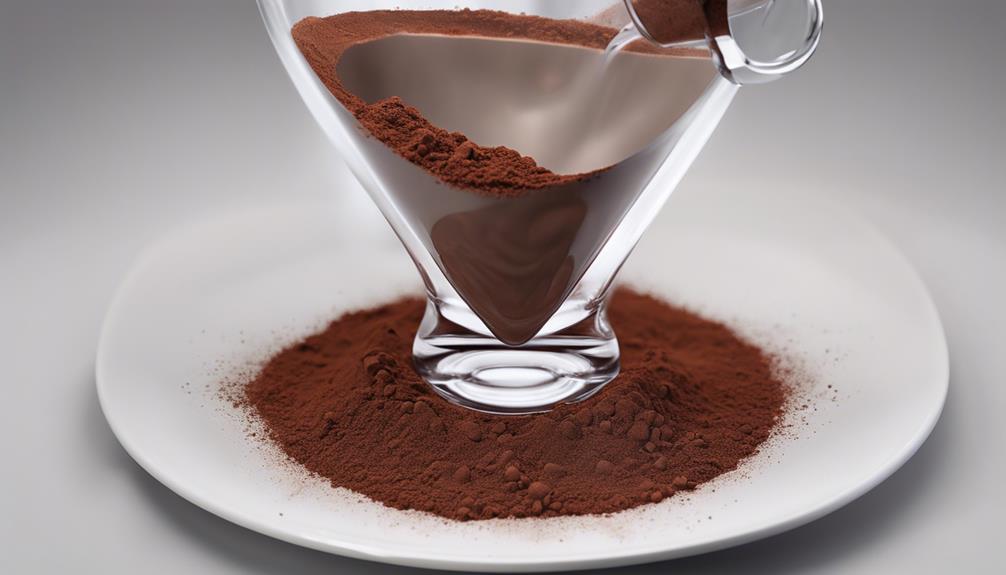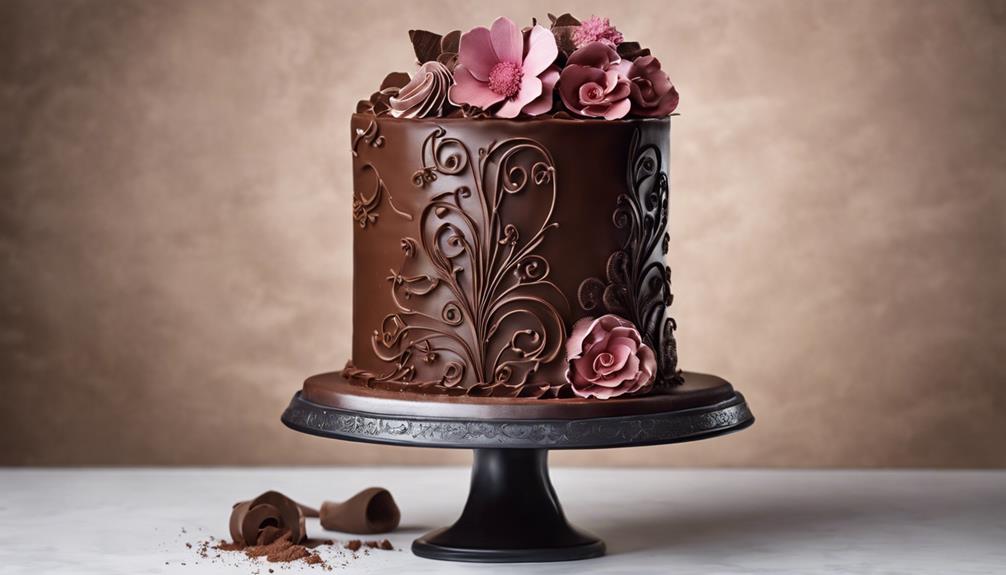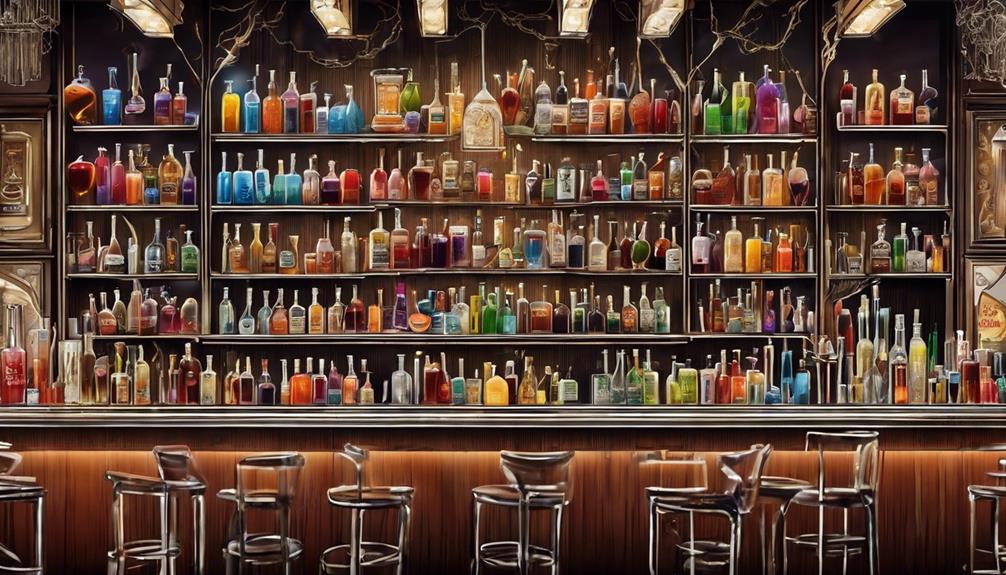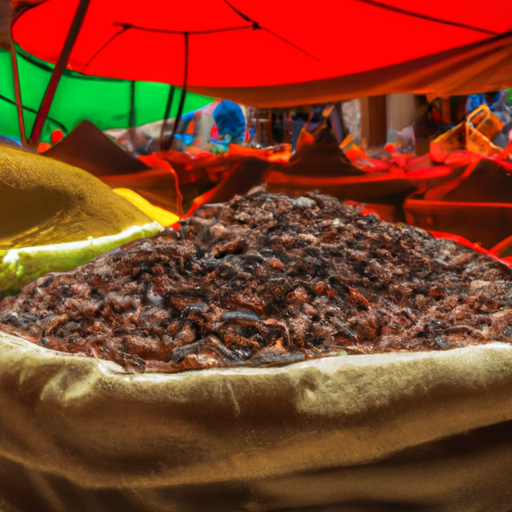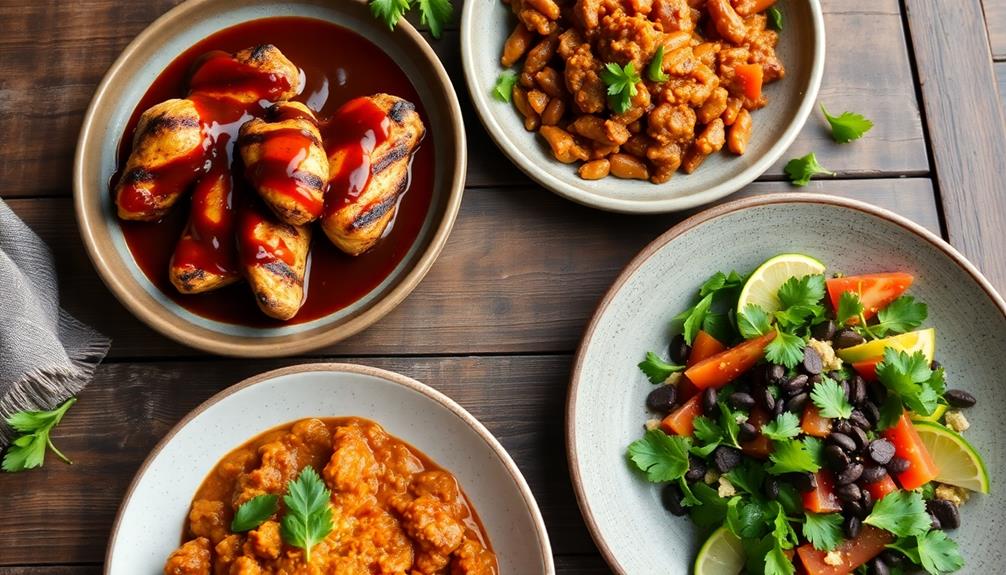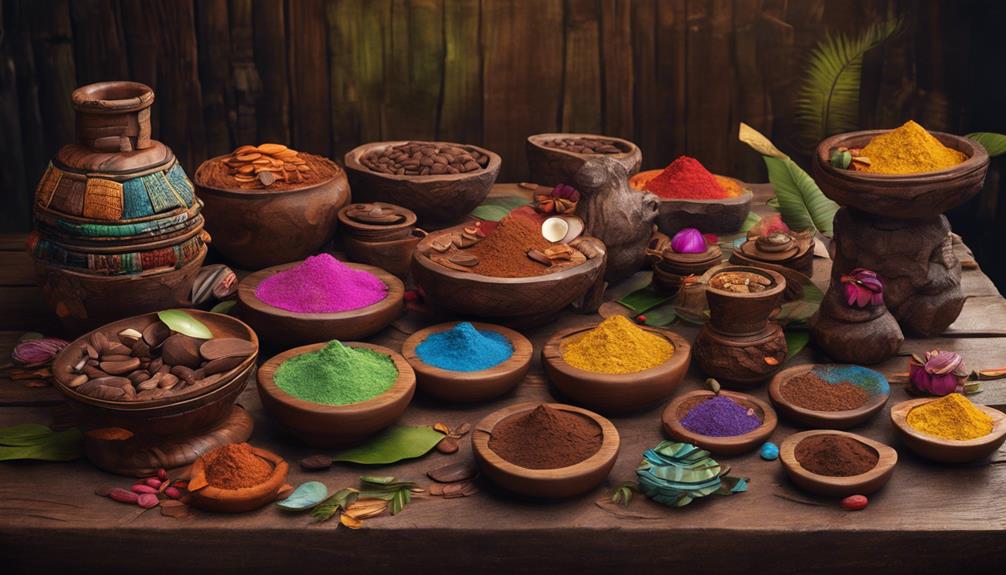Revealing the caffeine content in cacao powder highlights a natural stimulant, with approximately 35mg of caffeine per serving. This caffeine is paired with theobromine, offering sustained stimulation. The high fat content in cacao helps to slow down the effects of caffeine, making it a distinctive choice for an energy boost. If you’re interested in delving deeper into the benefits and intricacies of cacao powder, there is a wealth of fascinating information for you to discover.
Key Takeaways
- Cacao beans contain around 35mg of caffeine per serving.
- Theobromine in cacao contributes to sustained stimulation.
- Different cacao types and processing methods affect caffeine levels.
- Milk chocolate has lower caffeine due to less cacao content.
- Optimal dosage and timing are crucial for balanced energy and mood enhancement.
The Unexpected Caffeine Powerhouse
As an unexpected caffeine powerhouse, cacao beans pack a significant punch with approximately 35mg of caffeine per serving. This amount of caffeine may seem modest compared to a cup of coffee, but it can still give you a gentle energy boost. What makes cacao unique is that it provides sustained alertness without the typical jitters associated with coffee.
When you consume dark chocolate made from cacao, you're not just satisfying your sweet tooth; you're also getting a natural source of energy that won't leave you feeling overstimulated. The theobromine in cacao contributes to its stimulating effects, offering an effective nudge when you need to stay focused. Despite having caffeine, cacao affects your brain chemistry differently from coffee due to its intricate mix of molecules.
The Mood-Enhancing Bean
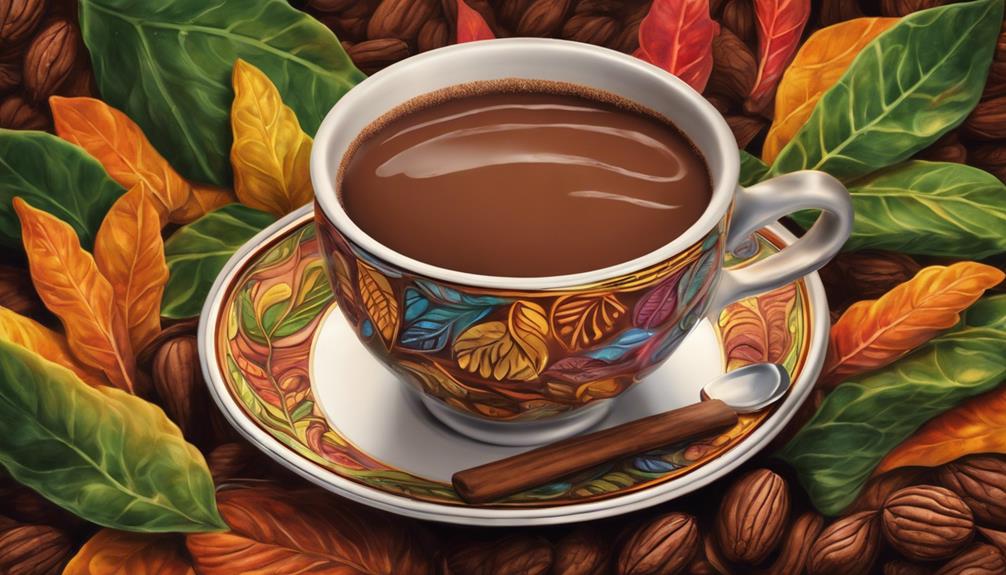
Cacao, rich in flavonoids, has mood-enhancing properties that can lift spirits and energize the body.
The flavonoids in cacao contribute to its mood-boosting benefits, providing a natural alternative for those seeking to enhance their mood.
Indulging in cacao not only boosts mood but also increases energy levels, making it a double win for those in need of a pick-me-up.
Mood-Boosting Properties
Rich in flavonoids with proven mood-enhancing properties, cacao presents an enticing natural alternative for uplifting spirits and energizing the body. Indulging in cacao treats not only delights the taste buds but also offers a noteworthy win by boosting mood and energy levels. The flavonoids found abundantly in cacao contribute considerably to its mood-enhancing benefits, making it a go-to choice for those seeking a natural mood lift. Below is a table highlighting some of the mood-boosting properties of cacao:
| Mood-Boosting Properties | Effects | Benefits |
|---|---|---|
| Flavonoids | Enhance mood | Lift spirits |
| Theobromine | Increase energy levels | Energize the body |
| Phenylethylamine | Release endorphins | Improve mood |
Let the delicious power of cacao uplift your spirits and invigorate your day!
Neurotransmitter Effects
Tapping into the brain's potential, cacao's neurotransmitter effects offer a natural boost to mood and cognition. The flavonoids in cacao play an important role in enhancing mood by interacting with neurotransmitters in the brain. These compounds promote the release of feel-good chemicals like serotonin and endorphins, which can elevate mood and create a sense of well-being.
Additionally, the small amount of caffeine in cacao further contributes to its mood-enhancing effects by providing a gentle energy lift. Together, the combination of flavonoids and caffeine in cacao can help improve focus, concentration, and overall cognitive function.
Energy and Focus
Enhancing both mood and cognitive function, the energy-boosting properties of cacao make it a versatile and effective natural stimulant.
The flavonoids found in cacao play an important role in lifting spirits and providing a gentle energy boost without the typical caffeine jitters. These flavonoids contribute to the mood-enhancing benefits of cacao, making it a desirable choice for those seeking a natural mood lift.
By indulging in cacao-rich treats, you not only get to boost your mood but also benefit from a subtle energy nudge. Unlike coffee, cacao offers a milder stimulant option that can help improve focus and concentration without the overwhelming buzz.
The Variety Matters
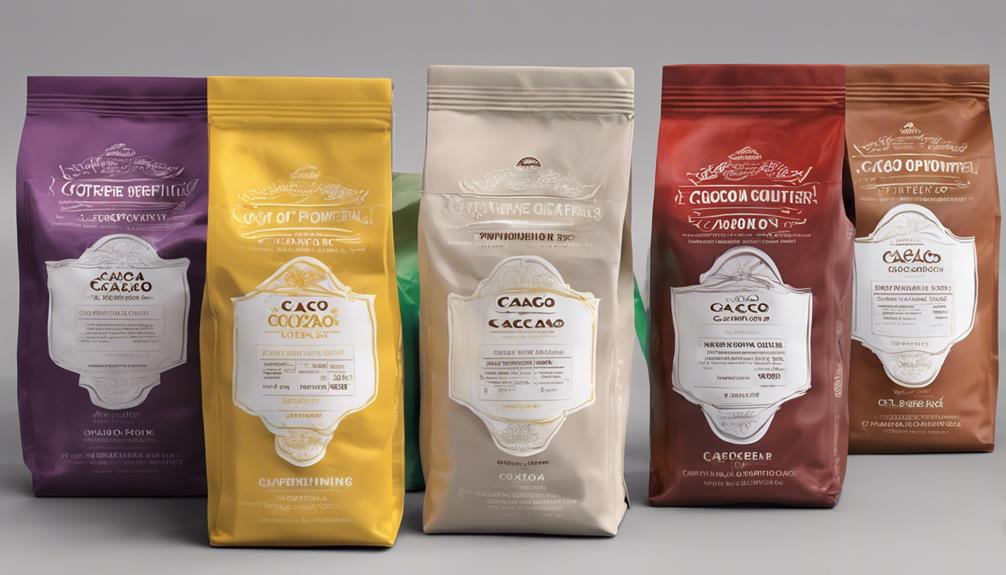
When considering the caffeine content in cacao powder, the variety of cacao used plays a significant role. Here are some key points to keep in mind:
- Different types of cacao offer varying levels of caffeine content, affecting the energy boost you may experience per serving.
- The processing methods of cacao beans directly impact the caffeine levels in the final products, influencing the amount of caffeine you consume.
Opting for high cacao percentage chocolate can provide more caffeine for enhanced health benefits, making it a good choice for a morning pick-me-up.
- Milk chocolate generally contains less caffeine compared to dark chocolate due to the lower cacao content, affecting the caffeine intake from your cacao treat.
- Choosing the right cacao product with the desired caffeine level is essential for achieving the desired energy boost, ensuring you get the right amount of caffeine to keep you going throughout the day.
The Perfect Dose for a Lift
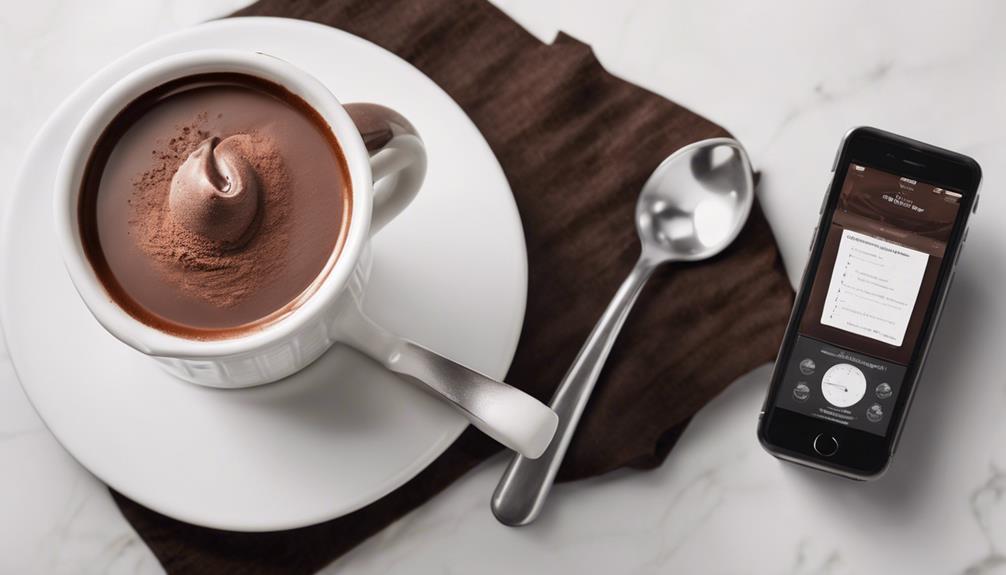
The key to experiencing the uplifting benefits of cacao lies in finding the perfect dose for a well-balanced energy boost. Cacao beans contain caffeine, which can provide an energy and mood lift when consumed in moderation. It's recommended to start with 1-2 ounces of dark chocolate per serving to gauge your body's response.
By balancing the caffeine intake from cacao, you can achieve a calm and balanced feeling without feeling overstimulated. Overindulging in dark chocolate can lead to excessive caffeine consumption, which might result in jitteriness or restlessness. Hence, it's essential to find the right dosage that offers an energy boost without the risk of overconsumption.
The Best Time to Indulge
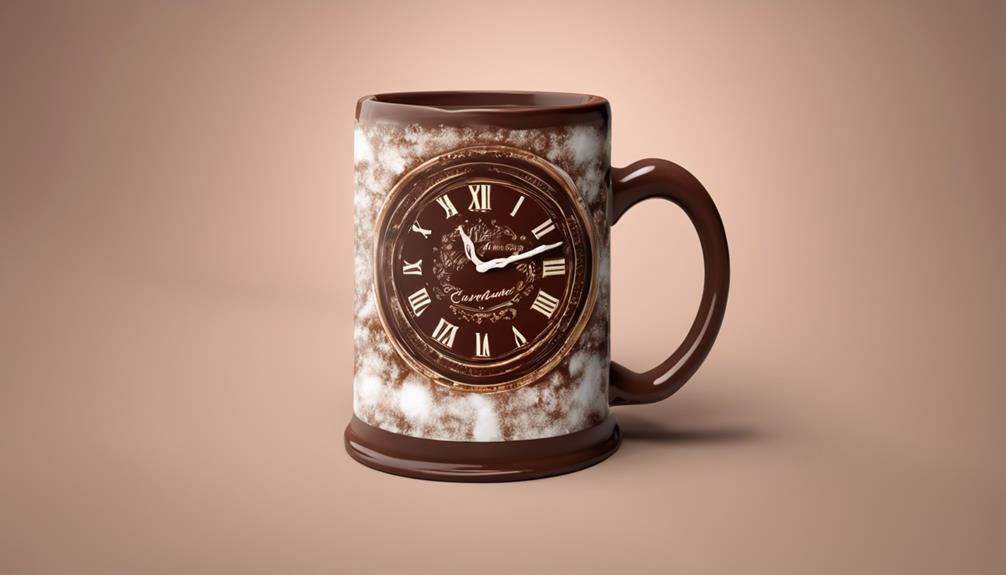
Indulging in cacao at the essential time of day can enhance its uplifting effects on mood and energy. When it comes to cacao powder and caffeine, timing is critical. Here are some points to ponder for the best time to enjoy your cacao:
- Consuming cacao in the early afternoon can provide a beneficial energy boost without disrupting sleep patterns.
- Timing plays a vital role in maximizing the mood-enhancing effects of cacao powder.
- Enjoying cacao at specific times of the day can enhance its uplifting properties.
- Indulging in cacao at the right time offers a pleasant way to energize without overstimulating.
- Optimum cacao dosage ensures a gentle lift in mood and energy without causing restlessness.
Unlocking the Secrets of Caffeine
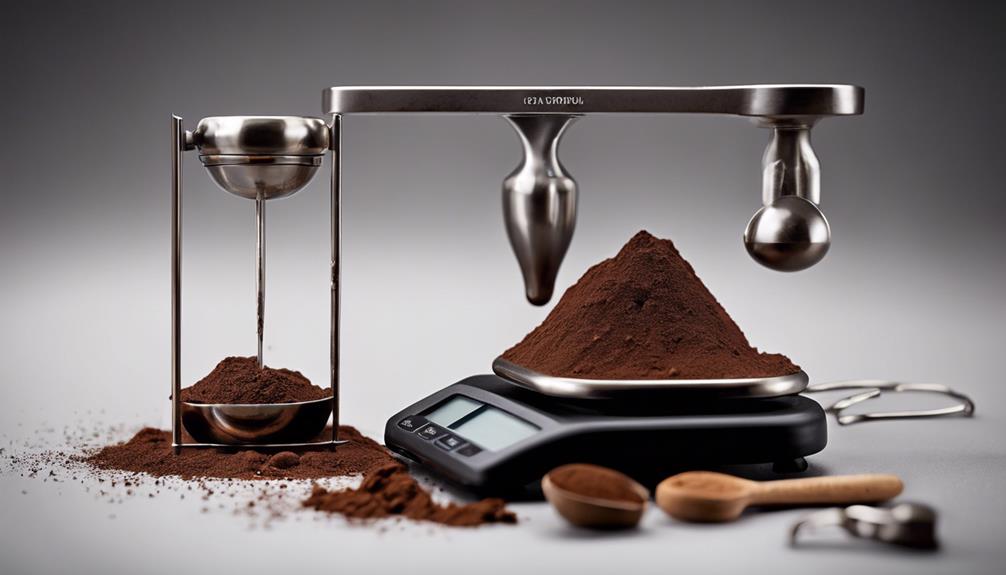
When it comes to caffeine, understanding its metabolism process is key to grasping its effects.
Exploring the differences between cacao and coffee regarding caffeine impact can provide valuable insights.
Revealing the health effects of caffeine consumption offers a thorough view of its influence on the body.
Caffeine Metabolism Process
Starting on the journey of understanding caffeine metabolism reveals the complex process through which this stimulating compound is transformed within the body.
- Caffeine in cacao powder is metabolized in the liver by enzymes like cytochrome P450.
- The half-life of caffeine in the body ranges from 3 to 7 hours, affecting its duration of action.
- Factors like age, genetics, and liver function can influence caffeine metabolism.
- Caffeine is broken down into metabolites like paraxanthine and theobromine during the metabolic process.
- Understanding caffeine metabolism can help predict its effects and potential interactions with other substances.
Understanding these intricate steps helps us grasp how our bodies handle caffeine from sources like cacao powder, offering insights into its impact on our well-being.
Cacao Vs. Coffee
Exploring the differences in caffeine content and effects between cacao and coffee sheds light on their distinct stimulant properties. Cacao beans contain theobromine as the primary stimulant, offering sustained energy without the intense effects of caffeine found in coffee. The high fat content in cacao slows down the release of caffeine in the body, providing a more gradual and sustained stimulant experience. Cacao contains a complex mix of compounds that interact with brain chemistry, creating a unique and multifaceted stimulant effect different from coffee. Lab testing has revealed approximately 35mg of caffeine per serving of cacao, contributing to its energizing properties. Understanding the nuances of cacao's caffeine content can help consumers appreciate its distinct stimulant qualities compared to coffee.
| Property | Cacao Beans | Coffee |
|---|---|---|
| Primary Stimulant | Theobromine | Caffeine |
| Release | Gradual and sustained | Quick and intense |
| Effects | Unique and multifaceted | Immediate and sharp |
Health Effects Explained
Cracking the secrets of caffeine reveals its intricate impact on health and well-being, providing insights into its diverse effects on the body.
- Caffeine in cacao powder offers sustained energy due to theobromine.
- The high fat content in cacao slows down the caffeine effects.
- Various molecules in cacao positively impact brain chemistry.
- Cacao provides a unique caffeine experience compared to coffee.
- Understanding the health effects of caffeine from cacao enhances overall well-being.
3 Mind-Blowing Facts About Caffeine
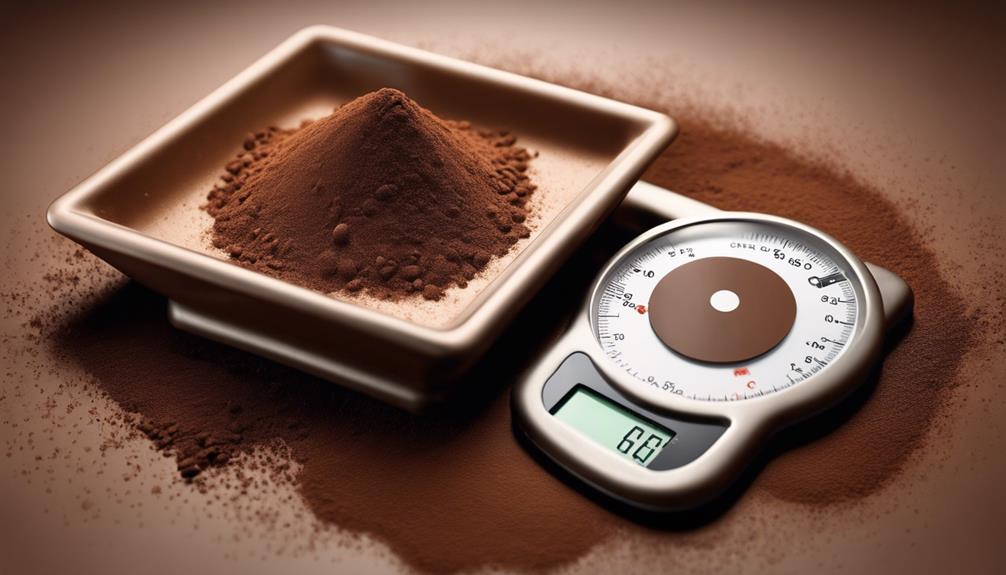
As I delved into the research on caffeine, I discovered some truly mind-blowing facts that illuminate its fascinating effects on the body and mind.
Did you know that cacao powder contains around 35mg of caffeine per serving? Surprisingly, the primary stimulant in cacao is theobromine, offering sustained energy rather than the quick jolt associated with caffeine. Additionally, the high fat content in cacao slows down the effects of caffeine in the body, leading to a more gradual release of energy.
What's truly intriguing is that cacao contains hundreds of molecules that affect brain chemistry, making its caffeine effect different from that of coffee due to its complex composition. This complexity contributes to the unique way in which cacao interacts with our bodies and minds, providing not just a boost of energy but also potential cognitive benefits.
Related Posts
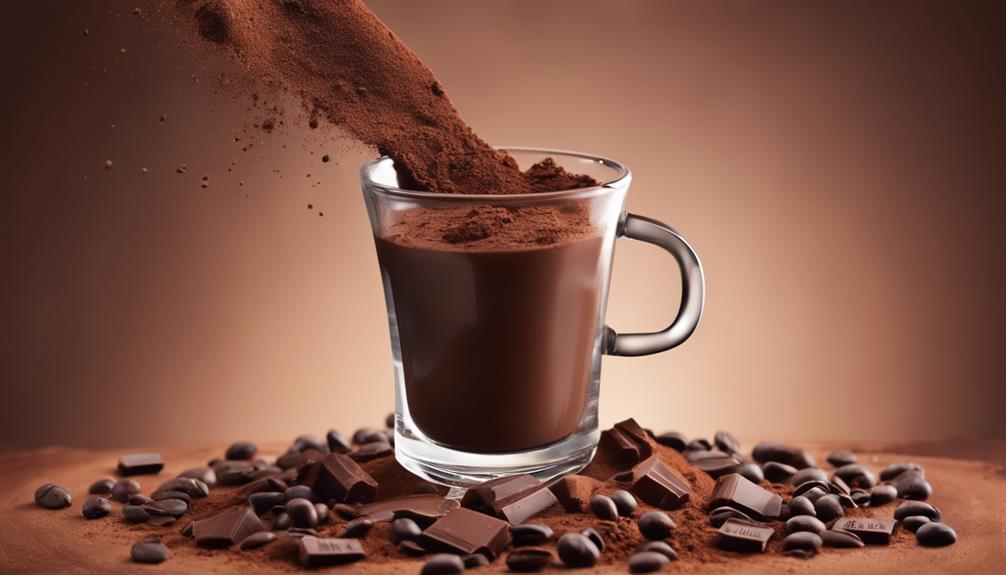
In connection with our discussion on cacao powder's caffeine content, let's explore some related posts.
- Discover the Best Ways to Incorporate Cacao Powder into Your Morning Routine: Learn how to add a nutritious boost to your day with cacao-infused recipes.
- Revealing the Surprising Health Benefits of Cacao Powder: Investigate the world of antioxidants and mood-boosting properties found in cacao.
- Comparing Caffeine Levels: Cacao vs. Coffee: Understand how cacao's caffeine content differs from your morning cup of joe.
- Investigating the History and Origins of Cacao: Trace the roots of this beloved ingredient and its journey to your pantry.
- DIY Cacao Beauty Treatments for Glowing Skin: Indulge in luxurious skincare using the natural goodness of cacao powder.
Frequently Asked Questions
Is There a Lot of Caffeine in Cacao Powder?
There's moderate caffeine in cacao powder, around 35mg per serving. Theobromine, the primary stimulant, offers sustained energy. The high fat content in cacao slows down caffeine effects. Cacao's complex molecules impact brain chemistry uniquely.
How Much Caffeine Is in Ceremonial Grade Cacao?
I found that ceremonial grade cacao contains approximately 35mg of caffeine per serving. Despite this, its main stimulant is theobromine, offering sustained energy. The high fat content slows down caffeine's effects, and its complex composition affects brain chemistry positively.
How Much Caffeine Is in Navitas Cacao Powder?
I've found that Navitas Cacao Powder contains around 35mg of caffeine per serving. However, the primary stimulant in cacao is theobromine, offering a sustained energy boost. Its unique composition results in a caffeine experience distinct from coffee.
Is There Caffeine in Full Power Cacao?
Yes, there's caffeine in Full Power Cacao, approximately 35mg per serving. It provides sustained energy from theobromine. The high fat content in cacao butter slows down caffeine effects. The complex composition offers a unique experience different from coffee.
How Much Caffeine is Present in Pure Cacao?
Pure cacao is known for the uniqueness of cacao as it contains natural caffeine. On average, one ounce of cacao contains about 12 milligrams of caffeine. However, the exact amount can vary depending on the variety of cacao beans and the way they are processed.
Conclusion
To summarize, cacao powder isn't just a tasty indulgence but also a remarkable source of caffeine. Its mood-boosting qualities and different caffeine levels make it a distinctive inclusion in your everyday regimen. Remember to savor it in moderation and take into account the time of day you enjoy this potent bean.
By grasping the hidden truths of caffeine in cacao powder, you can make educated decisions to enhance your energy and mood efficiently.

